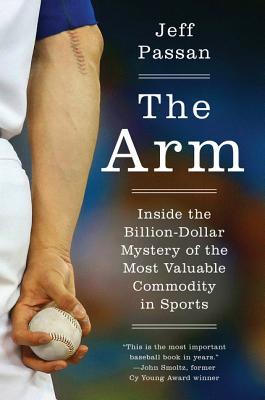What do you think?
Rate this book


376 pages, Hardcover
First published April 5, 2016
For 130 years, pitchers have thrown a baseball overhand, and for 130 years, doing so has hurt them. Starter or reliever, left-handed or right-handed, short or tall, skinny or fat, soft-tossing or hard-throwing, old or young—it matters not who you are, what color your skin is, what country you’re from. The ulnar collateral ligament (UCL) , a stretchy, triangular band in the elbow that holds together the upper and lower arms, plays no favorites. If you throw a baseball, it can ruin you. When the UCL breaks, only one fix exists: Tommy John surgery…More than 50 percent of pitchers end up on the disabled list every season, on average for two months—plus, and one-quarter of major league pitchers today wear a zipper scar from Tommy John surgery along their elbows.Major League Baseball (MLB) currently spends about $1.5 billion a year on pitchers. There is considerable financial incentive for organized baseball to find a solution to this epidemic of injury. And there is certainly plenty of human need on the part of players and their families for something to be done. How did this plague of injuries come to be and what can be done about it?

‚ÄúMy dad worked at The Cleveland Plain Dealer for 40 years, so I knew what I wanted to do when I was 12 years old,‚Ä� Passan said. ‚ÄúI was very lucky. My dad has been editing my stuff for 20 years now and I can say he‚Äôs the best editor I‚Äôve ever had.‚Ä� - from SJI articleI am sure his editors at Yahoo will be thrilled to know that. He co-authored Death to the BCS: The Definitive Case Against the Bowl Championship Series, published in 2010. The Arm is his first solo book.
Mostly, I wanted to understand this for my son. He was five years old. He loved baseball. He wanted to play catch every day. He was hooked, like his dad. And the more I heard stories from other parents—of their sons getting hurt or boys they know quitting baseball teams because their arms no longer worked—the more I needed to figure out what was happening to the arm.Passan takes parallel approaches to his subject, mixing hardball facts with softer stuff. There is a lot of information to impart. He compares the current injury rate and occupational environment to those of the past. He looks at the structure of the arm, considers the stresses it endures and presents competing theories on the causes of the current epidemic. He spends time with experts in the current state of UCL injury medicine, and talks with several proponents of alternative approaches to injury prevention and rehabilitation. One of these is Doctor Tommy John, Jr. And yes, Passan does talk with TJ Senior as well. He examines promising models for the future, including one new surgery that could have a dramatic impact on recovery time and another training approach that shows promise as a way of preventing the injury in the first place. He follows through, making a large point of showing that many of the current approaches to prevention and rehab are based more on wishful thinking than on hard science. He also goes the distance, traveling to Japan to look at how things are done there, and seeing if their approach is better or worse for arms.



The Currents Lounge inside the Hyatt Regency Jacksonville is a paint-by-numbers hotel bar, with a few flat-screen TVs, a menu of mediocre food, and a broad liquor selection to help people forget they’re drinking in a hotel bar in Jacksonville.It generates an urge to look around and find out where the down-at-the-heel PI is hoisting another ill-advised shot while waiting for a femme fatale client. Another:
Nothing beats a major league mound, a ten-inch-high Kilimanjaro that few get to climb. Nobody in team sports commands a game like the pitcher. He dictates the pace and controls the tempo. A goalie in hockey or soccer can win a game with superior reaction. A pitcher prevents action. There is great power in that.So, a sweet, writerly changeup to go with his intel-rich heater. (of course, the recent (2023) introduction of the pitch clock has seriously diminished that controller status.
